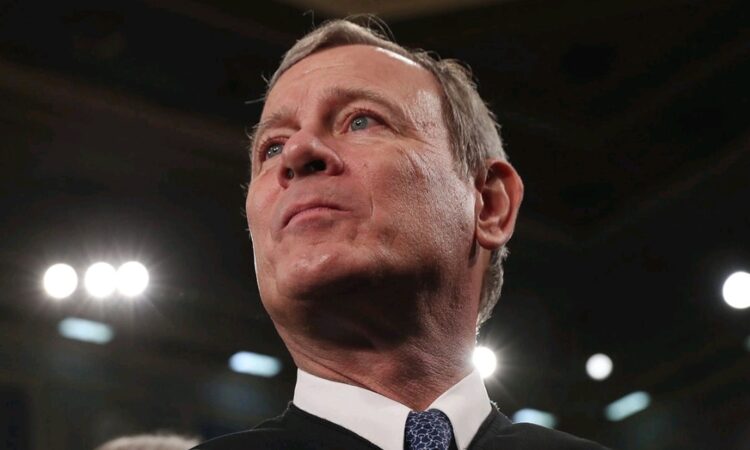
Recently, a major legal conflict has exposed growing frustration among lower court judges toward the U.S. Supreme Court, particularly in how it handles certain rulings and interacts with the rest of the judiciary. The Trump administration tried to cancel \$2.2 billion in federal grants for Harvard University, but U.S.
District Judge Allison Burroughs ruled against them. She found that the administration’s actions violated the First Amendment because they essentially forced Harvard to align with its political agenda. Her decision was a significant setback for the administration, but it also leaves Harvard facing a complicated and drawn-out legal process to try to recover the funds that were taken away.
What made this case even more remarkable was how openly Judge Burroughs criticized the Supreme Court’s “shadow docket.” The shadow docket refers to decisions the justices make quickly, often without full hearings or clear explanations, yet these decisions can have major effects on the law.
Burroughs highlighted how confusing and inconsistent these rulings can be, and how unfair it is for the Supreme Court to scold lower court judges for supposedly defying its orders when those orders are so vague that even experienced judges struggle to interpret them.
Her comments came after Justices Neil Gorsuch and Brett Kavanaugh issued a harsh warning to lower courts, essentially accusing them of not following Supreme Court precedent. In one recent instance, their remarks were so strong that a judge, William Young, felt compelled to apologize for not understanding what the justices wanted — even though the Supreme Court has never clearly said that shadow docket decisions are binding precedent.
Judge Burroughs, in a bold footnote, pushed back against this treatment, saying it is not helpful or necessary to criticize trial courts that are honestly trying to make sense of unclear, rapidly changing instructions. She defended her colleagues, arguing that they are working hard to uphold the law in a chaotic environment, and it is unreasonable for the Supreme Court to accuse them of defiance while giving little guidance.
Her words reflect a broader frustration that is building among judges in lower courts. A recent report revealed that at least 10 federal judges are willing to speak out about the Supreme Court’s handling of these cases and its failure to protect them from political attacks, threats, and harassment — not only from the public but also from political leaders, including members of Congress and even the president.
Many of these outspoken judges are part of a younger generation of jurists who have served most of their careers under a Supreme Court that they see as increasingly driven by political motives rather than neutral legal reasoning. Older judges, who experienced a court that functioned more like a traditional, balanced institution, tend to stay silent out of habit or respect for tradition. But younger judges like Burroughs seem to feel a responsibility to stand up, both for themselves and for colleagues who are less inclined to challenge the Supreme Court openly.
The tension has become so noticeable that some justices are trying to manage the fallout. Justice Brett Kavanaugh recently spoke publicly, praising trial judges as the “front line of American justice” and thanking them for their work. However, this message directly conflicts with the criticism he endorsed in the opinion with Gorsuch, where trial judges were sharply rebuked.
This inconsistency makes it hard to tell whether Kavanaugh genuinely regrets signing that opinion or whether he is simply trying to appear supportive now that he sees the backlash it caused. Some observers believe this is part of his pattern: he joins strong, critical statements against lower courts and then later tries to soften their impact with polite words or private apologies, as he reportedly did in a past case involving Judge Jesse Furman.
Chief Justice John Roberts also seems aware of the growing unrest. Through his adviser Robert Dow, he delivered a message at a recent judicial conference, saying that the Supreme Court has a “tiny megaphone” and must be careful not to use it too often in order to preserve its independence. The suggestion was that the court cannot respond to every controversy loudly, or it risks losing its long-term authority. But many judges view this as an excuse rather than a genuine defense. They argue that when the Supreme Court wants to criticize lower courts, it has no problem being loud and forceful. Yet, when powerful political figures ignore or defy lower court rulings, the justices often remain silent or avoid confrontation.
This imbalance has created a sense that the Supreme Court picks its battles based on politics, rather than principle. It loudly asserts its authority when lower courts make decisions it dislikes, but it stays quiet when political allies disregard the judicial process. This approach undermines trust between the different levels of the judiciary and makes lower court judges feel exposed and unsupported.
If this continues, it could lead to serious consequences for the rule of law in the United States. When the Trump administration or any future administration sees that ignoring lower courts carries no real penalty, it may start ignoring the Supreme Court as well.
The judiciary’s strength depends on mutual respect and the understanding that all courts, from the lowest trial court to the highest court in the land, are part of the same system. By failing to defend lower courts and allowing political pressures to shape how and when it speaks, the Supreme Court risks weakening that system. Judges like Burroughs are now calling attention to this problem, hoping to protect not just their own authority but the credibility of the courts as a whole.




